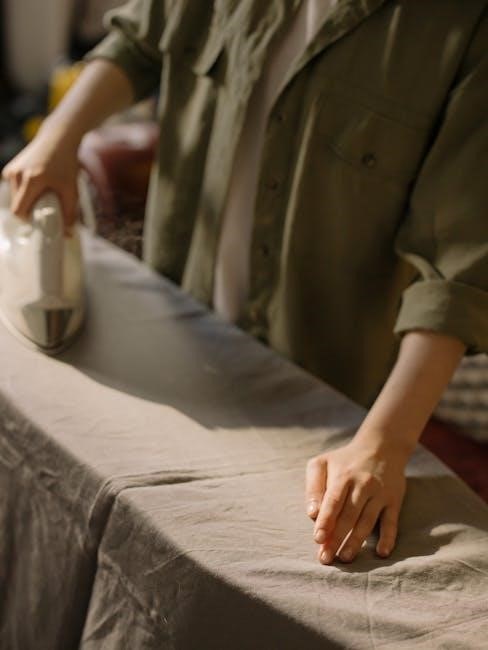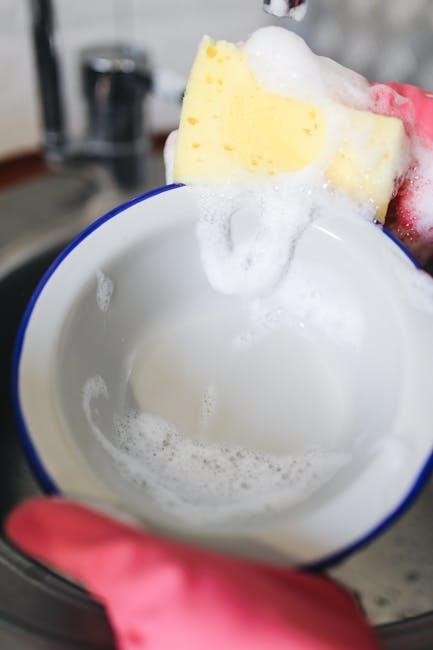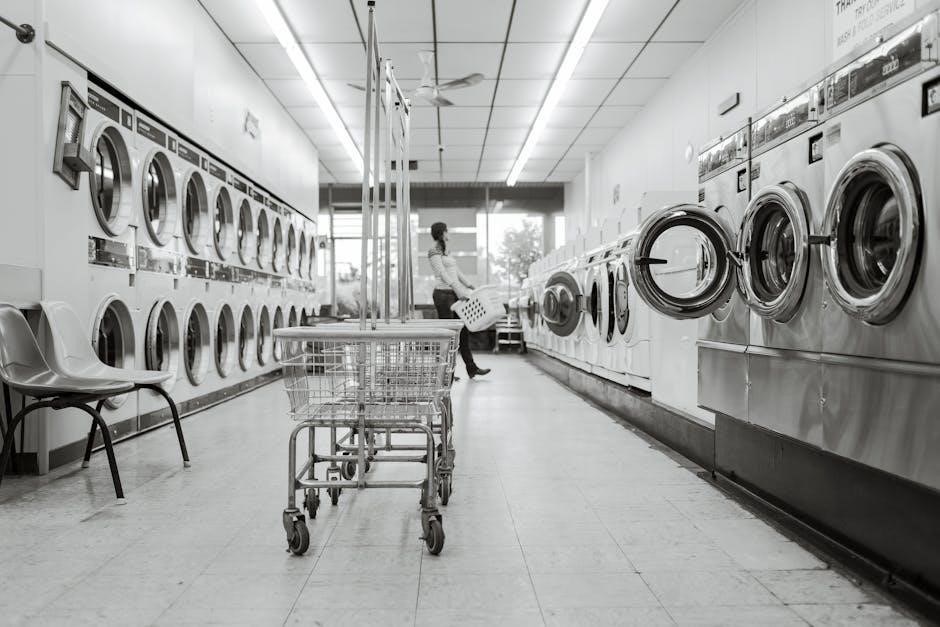Manual self-cleaning oven cleaning is a process that requires attention to detail and patience, using natural agents like ammonia and baking soda to remove grime and food residue, with a systematic approach to achieve optimal results effectively always.
Understanding the Importance of Regular Cleaning

Regular cleaning of a self-cleaning oven is essential to maintain its efficiency and longevity, as well as to ensure a safe and healthy cooking environment. A dirty oven can lead to a range of problems, including reduced performance, increased energy consumption, and the risk of fires; Furthermore, a clean oven is also important for food safety, as built-up grime and food residue can harbor bacteria and other microorganisms. By cleaning the oven regularly, individuals can prevent the accumulation of tough stains and grime, making the cleaning process easier and more effective. Additionally, regular cleaning can also help to identify and address any potential issues with the oven, such as worn-out seals or damaged heating elements, before they become major problems. Overall, understanding the importance of regular cleaning is crucial for anyone who wants to keep their self-cleaning oven in good working condition and ensure a safe and healthy cooking environment. Proper maintenance and cleaning can help to extend the life of the oven and prevent costly repairs.

Preparing the Oven for Manual Cleaning
Remove racks and shelves, and let the oven cool down completely, to prepare for manual cleaning with natural agents and tools, for a safe and effective process always and properly.
Removing Large Debris and Food Particles
Removing large debris and food particles is a crucial step in the manual cleaning process of a self-cleaning oven. This step helps to prevent scratches and damage to the oven surfaces during the cleaning process. Use a soft brush or a non-abrasive scrubber to gently sweep away large food particles and debris from the oven floor and walls. Be careful not to scratch the surfaces, as this can damage the oven’s finish. For tougher debris, a mixture of baking soda and water can be used to create a paste that helps to loosen and remove the particles. Apply the paste to the debris and let it sit for a few minutes before wiping it away with a damp cloth. This step is essential in preparing the oven for further cleaning and ensuring a safe and effective cleaning process. By removing large debris and food particles, you can help to prevent the spread of bacteria and germs, and keep your oven in good working condition. Regular cleaning can also help to reduce the risk of oven fires and other safety hazards.

Manual Cleaning Techniques and Tools
Manual cleaning techniques involve using soft brushes, non-abrasive scrubbers, and gentle cleaning products to remove grime and food residue effectively always using the right tools.
Using Natural Cleaning Agents Like Ammonia and Baking Soda
When it comes to manually cleaning a self-cleaning oven, using natural cleaning agents like ammonia and baking soda can be a highly effective method. These agents are gentle on the oven’s surfaces yet tough on grime and food residue. To use ammonia, simply place a bowl of ammonia in the oven and let it sit overnight, allowing the fumes to loosen any tough grime. Baking soda can be used to create a paste that is applied directly to the surfaces of the oven, where it can be left to sit for several hours before being wiped away. This method is not only effective but also environmentally friendly and cost-effective. By using natural cleaning agents like ammonia and baking soda, you can avoid the use of harsh chemicals and keep your oven clean and in good working order.

Safety Precautions and Aftercare
Always wear gloves and ventilate area to avoid exposure to harsh fumes and chemicals during manual cleaning process and aftercare procedures always.
Avoiding the Use of Bleach and Other Harsh Chemicals
When manually cleaning a self-cleaning oven, it is essential to avoid using bleach and other harsh chemicals, as they can cause damage to the oven’s surfaces and potentially harm your health. According to various sources, including online tutorials and cleaning guides, bleach can discolor or damage the surfaces of a self-cleaning oven. Instead, opt for natural cleaning agents like ammonia and baking soda, which are effective at removing grime and food residue without causing harm. Using gentle cleaning products and methods can help maintain the oven’s self-cleaning feature and ensure it continues to function properly. Additionally, avoiding harsh chemicals can also help prevent the risk of toxic fumes and exposure to harmful substances. By choosing gentle and non-toxic cleaning methods, you can safely and effectively clean your self-cleaning oven without compromising its performance or your health. This approach is not only safer but also more environmentally friendly, making it a better choice for manual cleaning. Overall, avoiding bleach and other harsh chemicals is a crucial step in manually cleaning a self-cleaning oven.
